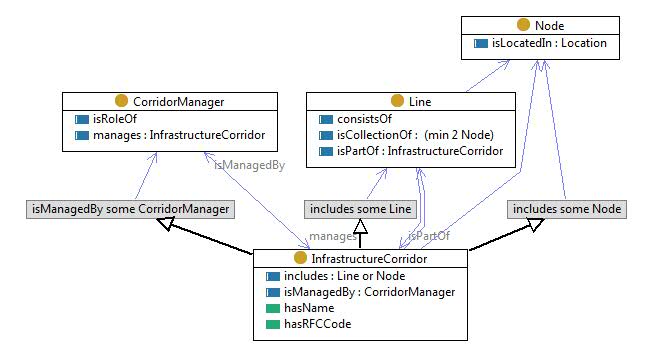rdfs:comment
-
 |
International market-oriented Rail Freight Corridors (RFCs), established by the Regulation (EU) No 913/2010, define the major directions of the railway freight traffic in Europe. Their purpose is to provide high-level, long-distance and high-quality geographic routes and train paths to be used by the railway undertakings (RUs).
A corridor offers so-called pre-arranged paths (PAPs), which mean a dedicated capacity for international railway freight traffic, to allow seamless path scheduling and traffic control.
Each corridor is designed, however, not as a point-to-point connection of two specific nodes or stations with a specific route, but rather as a set of railway lines connecting major industrial or economic areas of the member states. A corridor may therefore have multiple lines running in parallel.
Relationships:
• A corridor is a subset of the network (in the sense of the European network, not of one specific member state)
• A corridor is managed by one corridor manager
• A corridor includes lines and nodes
• A corridor has a name and an RFC code
|
|

